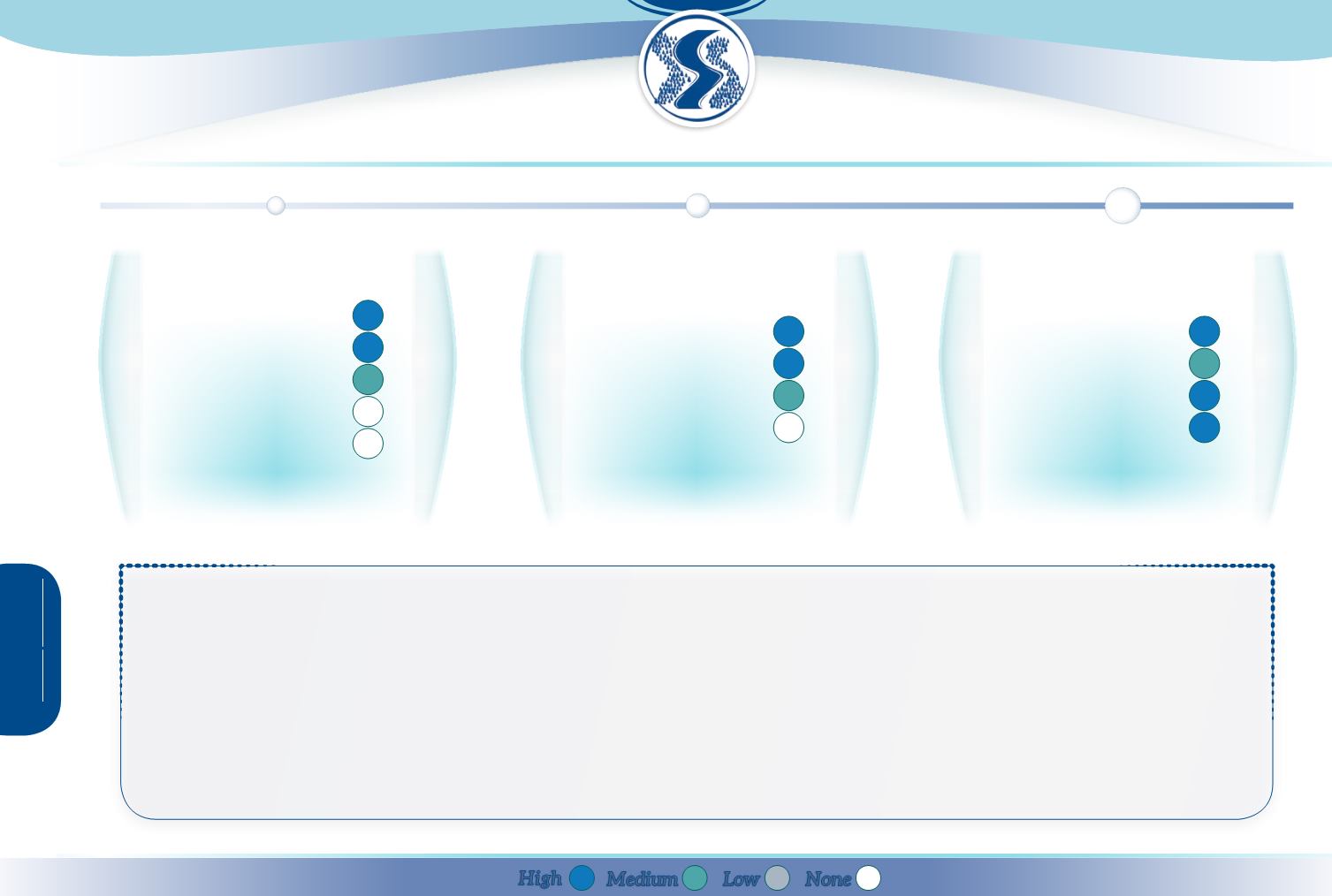
E
cosystem
servicesdelivered
Provisioning
Regulation & maintenance
Cultural
Abiotic
C
ontribution
topolicyobjectives
Water Framework Directive
Floods Directive
Birds & Habitats Directive
2020 Biodiversity Strategy
P
otential
biophysicaleffects
Runoff
Reducing pollution
Soil conservation
Habitat
Climate Change
High
Low
Medium
None
Restoration of natural infiltration to groundwater has a significant impact on
runoff storage
, since rainfall water is able to percolate downward through pores in the soil and
fractures in rock until reaching the saturated zone. Surface structures performed to increase water infiltration can capture river water at times of high flow and provide storage.
Increased infiltration contributes to
storing large amounts of water and to enhancing groundwater recharge
. It therefore plays a significant role in reducing flood
risk and erosion (through reduced runoff).
Restoration of natural infiltration to groundwater
will help to decrease concentrations of
pollutants
originating in adjacent areas before they reach rivers (propor-
tionally this is likely to have a greater impact on smaller streams). Interception of nutrients and organic materials by the soil contributes to improving soil quality.
Infiltration and purification help to prevent groundwater and surface water status deterioration by restoring a more natural water balance and intercepting pollutant pathways.
Slowing runoff and infiltration contribute to protecting habitats and prevent biodiversity loss.
Groundwater resources and their long-term replenishment are controlled by long-term climate conditions. Restoration of natural infiltration to groundwater contributes toward
cli-
mate change
adaptation. It also may provide various cultural services, for instance through maintaining spring flows used in historical equipments, particular in southern Europe


